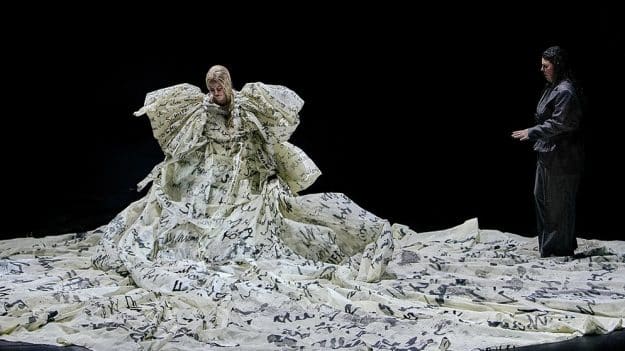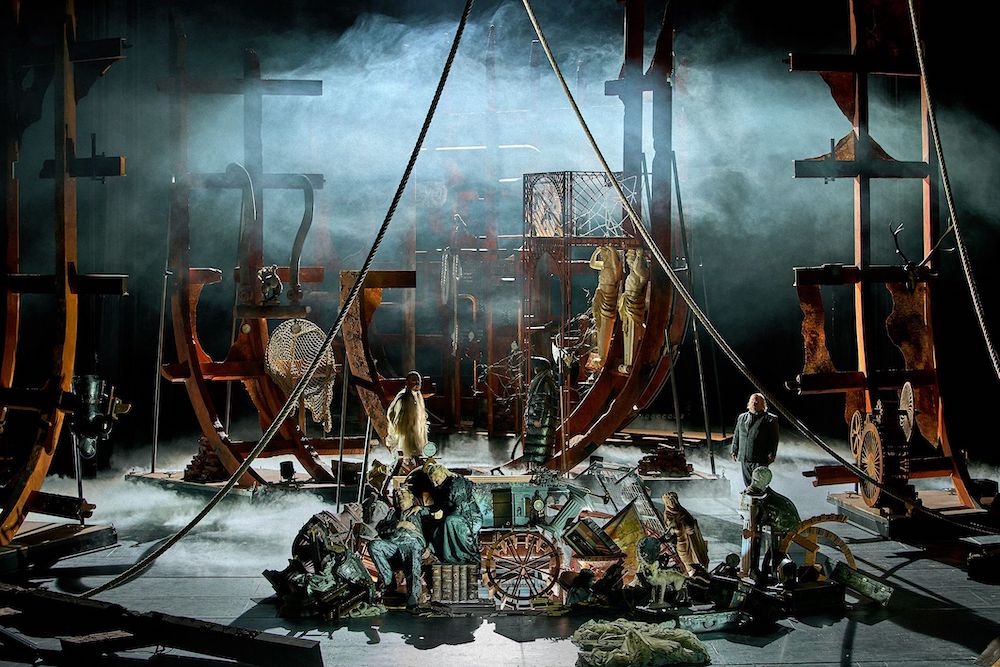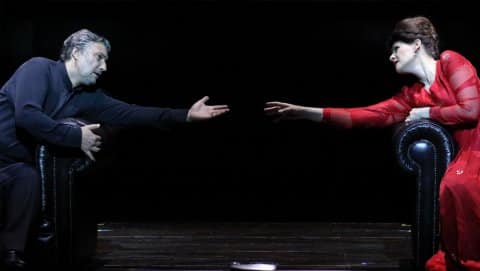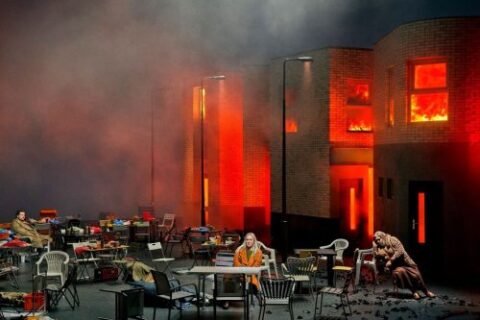TRISTAN AND ISOLDE • BAYREUTH
★★★☆☆☆

Photo: Enrico Narwath
REVIEW TRISTAN AND ISOLDE IN BAYREUTH: FRUSTRATING LACK OF THEATRICAL DRAMA
Which is longer? The Nile or the second act of Tristan and Isolde? As impressed as I am with the soloists, composition and orchestral playing, I am equally frustrated by the provocative lack of anything approaching engaging on-stage drama in Bayreuth’s 2024 production of Wagner’s great work.
Icelandic director Thorleifur Örn Anarsson is responsible for a brand new staging of Wagner’s iconic love tragedy, which on the one hand is a thunderous musical triumph – and on the other hand an almost irreverently provocative slow-burner that requires quite a bit of patience – even from a trained Wagner audience.

Photo: Enrico Narwath
The sparse action is divided into three impressive sets by the exciting Lithuanian set designer and visual artist Vytautas Narbutas. The first act takes place on an abstract ship’s deck with decorative pieces of hanging rigging in stunning lighting, with Isolde as the foreground figure in a gigantic wedding dress nodding to the foaming sea and the boat’s mainsail.
From here, Act 2 takes us into the interior of the ship, to an enormous set design of the cargo hold and a crazy array of new and antique paraphernalia that seems to be the luggage Isolde has brought with her to her new life as the wife of King Marke, whom she is to marry as part of a peace treaty.
Before it gets that far, she falls in love with the knight Tristan, who has been sent to fetch her but ends up scoring the bride-to-be himself after a magic potion causes a mess on the backstretch.
![]()
Photo: Enrico Narwath
The couple’s impossible love ends in the Liebestod that became Wagner’s trademark. Only in death can they have each other.
The work’s place on the very top shelf of opera is primarily due to the musical representation of the depths of love, which stands as a game changer in opera composition, and probably also in music history as such. The music is often used in dark feature films (e.g. Melancholia) and the Tristan chord with its unresolved dissonance is world famous.
One British reviewer goes so far as to say that if you’re not a music theory geek, or at least musically knowledgeable at a higher level than medium, you should just let Tristan and Isolde take care of itself. Read more about the music in my review of Tristan and Isolde from the Copenhagen Opera here.

Photo: Enrico Narwath
The cast here in Bayreuth is top notch with Swedish/Finnish soprano Camilla Nylund as the robust Isolde and Austrian tenor Andreas Schager as a strongly singing Tristan, who is all too often left to his own devices in static, actionless poses from which he sings directly to the audience.
Bass Günther Groissböck as King Marke has a little more action to work with. He manages to wrap his anger in an overdelicate sound and is my favourite this evening.
The orchestral playing under the direction of Semyon Bychkov matches the stage drama and allows timbre to develop in slow tempi – clear, transparent and at the highest level.
There is intellectual satisfaction in identifying Wagner’s intricate weaving of musical clues and motifs, floating almost weightlessly in keys and instrumentation in fluctuating variations.
Slightly more tangible is the Mild und Leise theme, which is elementally poignant in its simplicity and perhaps the closest Wagner comes to something you can hum along to.




